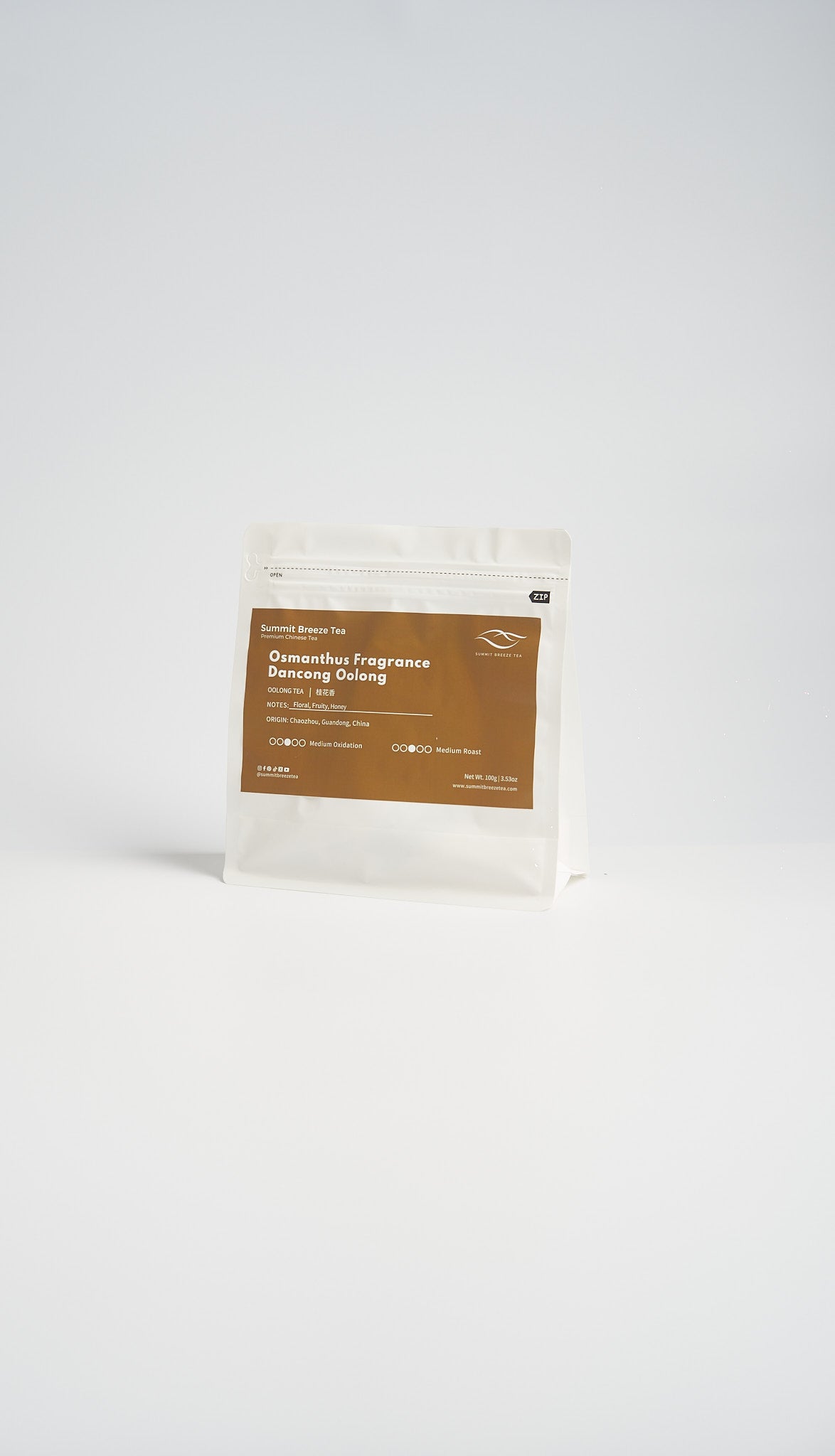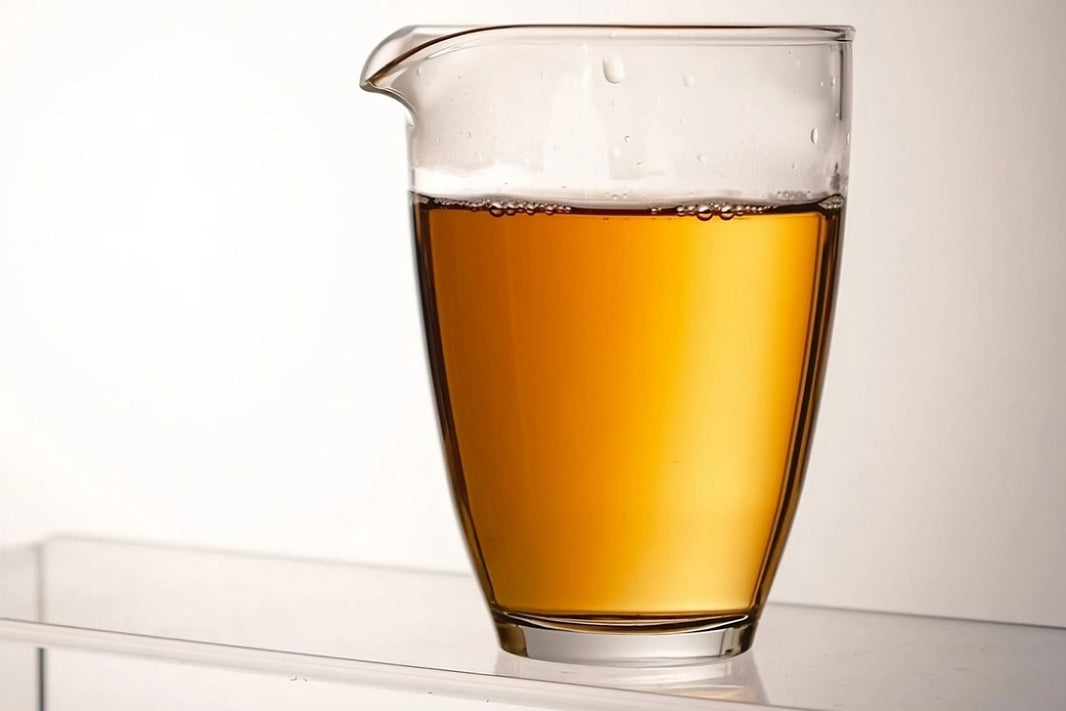Oolong tea is one of the six major types of tea, known for its incredibly rich and diverse flavor profile.
Oolong tea boasts a complex flavor spectrum, featuring floral, fruity, honeyed, nutty, smoky, and caramelized notes.
The taste of oolong tea depends on three things: its fermentation level, the temperature of roasting, and the tea cultivar.
Lightly Fermented and Unroasted Oolong Tea
Lightly fermented oolong tea often skips the roasting step. The final stage of these teas is drying, which takes place at a temperature below 110°C(230°F). The light oxidization process helps preserve the tea's natural fragrance.
Unroasted oolong has vibrant floral aromas. They include orchid, gardenia, jasmine, and osmanthus. Some also carry fruity and milky notes.

In terms of flavor, they have a refreshing and crisp taste, similar to green tea.
The liquor is usually a light green to yellow color. Because they are unroasted, these teas tend to have a higher moisture content and often get vacuum-sealed for freshness. You can store them in the refrigerator and try to consume them within a year for the best quality.
This type of oolong tea includes such as Wenshan Baozhong, Jin Xuan, Cui Yu, Four Seasons Spring, and Qingxin Oolong. The lightly oxidized Tieguanyin also falls into this category.
Moderately Fermented and Medium-Roasted Oolong Tea
Moderately fermented and medium-roasted oolong teas have a perfect balance of floral and fruity notes.
With more fermentation and the addition of roasting, their flavor becomes richer and more complex. The tea liquor transitions to a golden yellow hue and, in some cases, even an orange-red color if the roast is particularly strong.
These teas have a flavor profile that includes notes of floral, fruity, honey, spicy, sweetness, and woody. They are less fresh and crisp compared to lightly fermented teas but offer a fuller body and a stronger aftertaste.

This category of oolong tea showcases traditional craftsmanship, with a lower moisture level that makes it ideal for long-term storage.
Famous varieties include Wuyi Rock Teas, like the famous Rougui and Shuixian. Also, Phoenix Dancong varieties, like Honey Orchid and Duck Shit Oolong. And the traditional Tieguanyin.
Moderately Fermented and Heavily Roasted Oolong Tea
Heavy roasting involves raising the temperature or extending the time. A tea master can tailor this for moderately fermented oolong teas. Depending on the desired flavor, the same tea might be roasted medium or heavy.
With heavy roasting, the floral and fruity aromas gradually fade, giving way to smoky, toasted, and charcoal notes. The tea liquor becomes darker and the flavor fuller and more robust.
These types of oolong include traditional Da Hong Pao and heavily roasted Tieguanyin.
Historically, to withstand long sea voyages during export, these teas were heavily roasted to reduce their moisture content.
How Does Roasting Change the Flavor of Oolong Tea?
Unroasted or lightly roasted oolong teas retain the natural aroma of the tea leaves, offering a fresh and crisp flavor.
Medium-roasted oolong teas have a richer profile. They have floral and fruity, also nuttier, honey-like flavors. The fresh crispness fades, and the tea liquor becomes a vibrant golden color.

Heavily roasted oolong teas undergo even more transformation. The floral and fruity notes fade. They are replaced by roasted aromas, hints of charcoal, and flavors of cocoa or caramel.
Wuyi Rock Tea, in particular, requires exceptional skill in roasting. A famous saying in this craft is "Observe the tea to determine the roast." After the initial processing, the tea master will evaluate the tea. He will determine the roasting process for the crude tea.
Generally, high-quality fresh tea leaves can be roasted to varying degrees - lightly, moderately, or heavily - to achieve a specific flavor profile, as long as their oxidation process is well-managed. But, lower-quality teas undergo extensive roasting to compensate for their imperfections.
Does Bitterness Mean a Bad Oolong Tea?
Not necessarily. Bitterness in oolong tea doesn't always indicate poor quality. The key is how quickly the bitterness fades.
If it dissipates rapidly and transforms into a strong, lingering sweet after-taste, it could signify a well-made tea with excellent craftsmanship.
Final thoughts
Oolong tea's flavor profile is incredibly versatile, shaped by factors like fermentation level and roasting degree. But I would say that a great oolong typically presents a distinct floral and fruity note, which can reflect in the aroma or the flavor.








